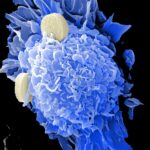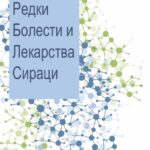 Adult coeliac disease (CD) affects approximately 1% of the population. Most patients diagnosed will respond to a gluten-free diet; however, up to 30% may have persisting symptoms. Such patients may have ongoing issues associated with adherence, non-responsive CD or refractory CD. This article provides a clinical overview of how to manage this group of patients with persisting symptoms, including an investigational algorithm and details of how to contact the National Health Service England Rare Diseases Collaborative Network for Non-Responsive and Refractory Coeliac Disease. We hope this will be a valuable source of contemporary information for all UK gastroenterologists and internationally. For more information click here.
Adult coeliac disease (CD) affects approximately 1% of the population. Most patients diagnosed will respond to a gluten-free diet; however, up to 30% may have persisting symptoms. Such patients may have ongoing issues associated with adherence, non-responsive CD or refractory CD. This article provides a clinical overview of how to manage this group of patients with persisting symptoms, including an investigational algorithm and details of how to contact the National Health Service England Rare Diseases Collaborative Network for Non-Responsive and Refractory Coeliac Disease. We hope this will be a valuable source of contemporary information for all UK gastroenterologists and internationally. For more information click here.
Publications
 Pulmonary hypertension (PH) is a pulmonary vascular disease characterized by pulmonary arterial remodeling and vasoconstriction leading to elevated pulmonary artery pressure and, ultimately, right heart failure. So far, few cases of COVID-19 disease in patients with PH have been reported. Caution is warranted in interpreting this observation as data are evolving and several factors may influence the number of reported cases of PH and COVID-19. Social distancing and quarantine could play a role, especially for patients with chronic diseases who might be more vigilant of their potential for respiratory infection. In addition, PH is a rare disease, and because testing is not universal, we could be underestimating the number of cases. Other hypothetical factors to consider are the underlying pathophysiology of PH and the medications used to treat PH and their implications in COVID-19. For more information click here.
Pulmonary hypertension (PH) is a pulmonary vascular disease characterized by pulmonary arterial remodeling and vasoconstriction leading to elevated pulmonary artery pressure and, ultimately, right heart failure. So far, few cases of COVID-19 disease in patients with PH have been reported. Caution is warranted in interpreting this observation as data are evolving and several factors may influence the number of reported cases of PH and COVID-19. Social distancing and quarantine could play a role, especially for patients with chronic diseases who might be more vigilant of their potential for respiratory infection. In addition, PH is a rare disease, and because testing is not universal, we could be underestimating the number of cases. Other hypothetical factors to consider are the underlying pathophysiology of PH and the medications used to treat PH and their implications in COVID-19. For more information click here.
Access to dental care during a coronavirus pandemic – recommendations for people with haemophilia
 On December 31, 2019, the World Health Organization reported cases of pneumonia of unknown etiology. Аuthorities published later the main cause – coronavirus (SARS-CoV-2) which was the reason billions of people to be placed under social isolation. As any other communicable disease affecting public health, there is an increasing awareness among people who have co-morbidities or bleeding disorders, such as hemophilia and other rare diseases. For more information click here.
On December 31, 2019, the World Health Organization reported cases of pneumonia of unknown etiology. Аuthorities published later the main cause – coronavirus (SARS-CoV-2) which was the reason billions of people to be placed under social isolation. As any other communicable disease affecting public health, there is an increasing awareness among people who have co-morbidities or bleeding disorders, such as hemophilia and other rare diseases. For more information click here.
Clinical case of a patient with plexus brachialis neurofibroma – the role of physiotherapy in a multidisciplinary team
 We present a clinical case of a patient diagnosed at age 9 with plexus brachialis neurofibroma. The purpose is to monitor the diagnostic and therapeutic procedures of the multidisciplinary team with an emphasis on the effectiveness of physiotherapy for full recovery. The complexity of the pathology requires collaboration in a multidisciplinary team, with the emphasis being on the role of physiotherapy and its rehabilitation in the recovery of the patient. Magnetic resonance imaging shows the tumor formation in the cervical region, surgically removed, after the completion of four courses of physiotherapy the full volume of active movements in the respective joints is restored. As a result of early initiated, comprehensive and individually targeted physiotherapy and rehabilitation after surgery, complete recovery of the patient is achieved. For more information click here.
We present a clinical case of a patient diagnosed at age 9 with plexus brachialis neurofibroma. The purpose is to monitor the diagnostic and therapeutic procedures of the multidisciplinary team with an emphasis on the effectiveness of physiotherapy for full recovery. The complexity of the pathology requires collaboration in a multidisciplinary team, with the emphasis being on the role of physiotherapy and its rehabilitation in the recovery of the patient. Magnetic resonance imaging shows the tumor formation in the cervical region, surgically removed, after the completion of four courses of physiotherapy the full volume of active movements in the respective joints is restored. As a result of early initiated, comprehensive and individually targeted physiotherapy and rehabilitation after surgery, complete recovery of the patient is achieved. For more information click here.
 Retinitis pigmentosa and Leber’s congenital amaurosis are rare inherited retinal distrophies that lead to irreversible blindness. The remarkable genetic heterogeneity of these diseases is due not only to the large number of genes involved, but also to the fact that mutations in a particular gene can cause different phenotypic variants, varying in severity, disease progression and inheritance. Logically, there is no unified classification that combines all clinical and genetic forms of the retinal pigment dystrophies. In this context, epidemiological research in clinical practice encompasses the studied contingents by different clinical-genetic and age criteria. This makes it extremely difficult to study and evaluate the epidemiology of the various forms of inherited retinal dystrophy. Despite the existence of clinical experience and a thorough knowledge of these diseases in Bulgaria, there is no published epidemiological data for the local population. This publication aims to analyze epidemiological data on retinitis pigmentosa and Leber congenital amaurosis and to provide an epidemiological assessment of the prevalence of these diseases in Bulgaria. For more information click here.
Retinitis pigmentosa and Leber’s congenital amaurosis are rare inherited retinal distrophies that lead to irreversible blindness. The remarkable genetic heterogeneity of these diseases is due not only to the large number of genes involved, but also to the fact that mutations in a particular gene can cause different phenotypic variants, varying in severity, disease progression and inheritance. Logically, there is no unified classification that combines all clinical and genetic forms of the retinal pigment dystrophies. In this context, epidemiological research in clinical practice encompasses the studied contingents by different clinical-genetic and age criteria. This makes it extremely difficult to study and evaluate the epidemiology of the various forms of inherited retinal dystrophy. Despite the existence of clinical experience and a thorough knowledge of these diseases in Bulgaria, there is no published epidemiological data for the local population. This publication aims to analyze epidemiological data on retinitis pigmentosa and Leber congenital amaurosis and to provide an epidemiological assessment of the prevalence of these diseases in Bulgaria. For more information click here.
 The assessment of innovation and the value of new medicinal therapies, has been repeatedly commented in “Rare Diseases and Orphan Drugs” journal. This is a key point in health technology assessment, which is often used by industry to justify the high cost of a particular drug. Innovation itself is a broad concept. However, when it comes to the value and assessment of health technologies, an important dimension of the innovation of a therapy is its added benefits. Not benefits, but added benefits. This is the link between pricing and cost of treatment with the health technology in question. For more information click here.
The assessment of innovation and the value of new medicinal therapies, has been repeatedly commented in “Rare Diseases and Orphan Drugs” journal. This is a key point in health technology assessment, which is often used by industry to justify the high cost of a particular drug. Innovation itself is a broad concept. However, when it comes to the value and assessment of health technologies, an important dimension of the innovation of a therapy is its added benefits. Not benefits, but added benefits. This is the link between pricing and cost of treatment with the health technology in question. For more information click here.
 The new issue of our scientific journal Rare Diseases and Orphan Drugs is now online. The issue contains 4 publications on various topics. The editorial is “Innovation, added benefits and pricing in health technology assessment”. If you would like to receive the latest information on rare diseases and orphan drugs, how the diagnostics and treatment is performed Bulgaria, please follow the link.
The new issue of our scientific journal Rare Diseases and Orphan Drugs is now online. The issue contains 4 publications on various topics. The editorial is “Innovation, added benefits and pricing in health technology assessment”. If you would like to receive the latest information on rare diseases and orphan drugs, how the diagnostics and treatment is performed Bulgaria, please follow the link.
 The vasculitides are a group of rare diseases with different manifestations and outcomes. New therapeutic options have led to the need for long-term registries. The Rheumatic Diseases Portuguese Register, Reuma.pt, is a web-based electronic clinical record, created in 2008, which currently includes specific modules for 12 diseases and > 20,000 patients registered from 79 rheumatology centres. On October 2014, a dedicated module for vasculitis was created as part of the European Vasculitis Society collaborative network, enabling prospective collection and central storage of encrypted data from patients with this condition. All Portuguese rheumatology centres were invited to participate. Data regarding demographics, diagnosis, classification criteria, assessment tools, and treatment were collected. We aim to describe the structure of Reuma.pt/vasculitis and characterize the patients registered since its development. For more information click here.
The vasculitides are a group of rare diseases with different manifestations and outcomes. New therapeutic options have led to the need for long-term registries. The Rheumatic Diseases Portuguese Register, Reuma.pt, is a web-based electronic clinical record, created in 2008, which currently includes specific modules for 12 diseases and > 20,000 patients registered from 79 rheumatology centres. On October 2014, a dedicated module for vasculitis was created as part of the European Vasculitis Society collaborative network, enabling prospective collection and central storage of encrypted data from patients with this condition. All Portuguese rheumatology centres were invited to participate. Data regarding demographics, diagnosis, classification criteria, assessment tools, and treatment were collected. We aim to describe the structure of Reuma.pt/vasculitis and characterize the patients registered since its development. For more information click here.
 Type 1 Usher syndrome (USH1) is a rare disease and major cause of genetic deaf-blindness. Deafness is present from birth while retinitis pigmentosa (RP) which typically presents during childhood is progressive leading to blindness. The aim of this research was to develop a disease model describing USH1 symptoms and their impact on patients’ lives. Qualitative interviews were conducted with patients (pediatric and adult) and parents of children and adolescents with USH1. Interviewed subjects were enrolled through ophthalmologists from specialized eye centers in the USA and in France. Trained interviewers used semi-structured techniques to elicit concepts relevant to patients and their parents. Thematic analysis of interview transcripts led to the identification of concepts which were organized to generate a disease model. For more information click here.
Type 1 Usher syndrome (USH1) is a rare disease and major cause of genetic deaf-blindness. Deafness is present from birth while retinitis pigmentosa (RP) which typically presents during childhood is progressive leading to blindness. The aim of this research was to develop a disease model describing USH1 symptoms and their impact on patients’ lives. Qualitative interviews were conducted with patients (pediatric and adult) and parents of children and adolescents with USH1. Interviewed subjects were enrolled through ophthalmologists from specialized eye centers in the USA and in France. Trained interviewers used semi-structured techniques to elicit concepts relevant to patients and their parents. Thematic analysis of interview transcripts led to the identification of concepts which were organized to generate a disease model. For more information click here.
 Celocentesis, is an invasive technique that can provide prenatal diagnosis of single gene disorders, from as early as seven weeks’ gestation. The objective of this study is to examine the safety of celocentesis. Celocentesis was performed for prenatal diagnosis of hemoglobinopathies in 402 singleton pregnancies, in which both parents were carriers of thalassaemia or sickle cell disease trait. We assessed procedure-related maternal discomfort or pain, success of sampling and obtaining of results, pregnancy outcome and postnatal follow up. For more information click here.
Celocentesis, is an invasive technique that can provide prenatal diagnosis of single gene disorders, from as early as seven weeks’ gestation. The objective of this study is to examine the safety of celocentesis. Celocentesis was performed for prenatal diagnosis of hemoglobinopathies in 402 singleton pregnancies, in which both parents were carriers of thalassaemia or sickle cell disease trait. We assessed procedure-related maternal discomfort or pain, success of sampling and obtaining of results, pregnancy outcome and postnatal follow up. For more information click here.
